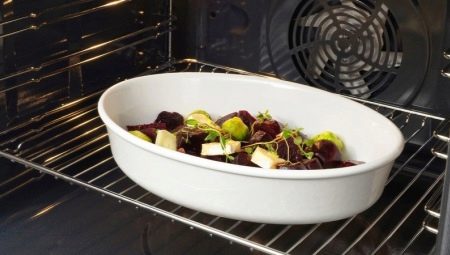Many housewives use an electric or gas oven to cook various dishes. However, juicy meat, sweet pastries and other culinary masterpieces can turn out perfect only if all the nuances of cooking are observed. These include the right choice of containers for baking. Modern manufacturers offer a wide range of dishes for the oven. Products differ in shape, size, manufacturing materials.

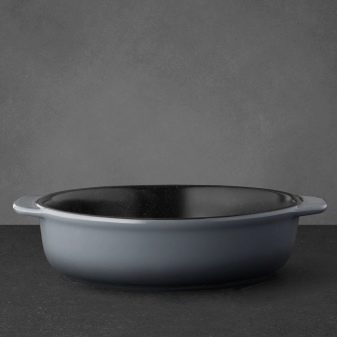
Features
Bakeware should be heat-resistant, and when used in a gas appliance, it should also be refractory. At the same time, quality products designed for cooking in the oven should conduct heat well. One of the important parameters when choosing heat-resistant dishes is the material. Tanks should not melt, deform, or absorb odors. Products in them must not burn. A dish cooked in a quality dish turns out to be evenly baked. It is easily removed, has no extraneous flavors.
Dishes for the oven must be chosen with fairly thick walls and bottom. The uniformity of heating is associated with this, as well as the ability to retain heat. The optimal parameter is from 0.6 to 0.8 cm.
Products with thinner walls can be used only if the dish does not need a long heat treatment.
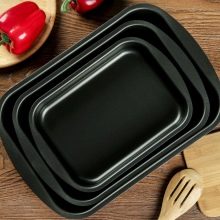
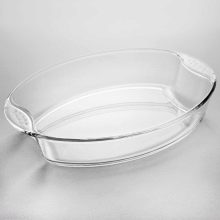
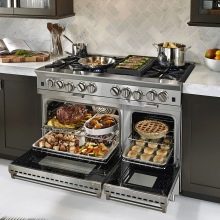
Varieties
There are several types of containers in which certain dishes are prepared.
- Cocotte. This is the name of a small bucket with a long handle. Such dishes are perfect for preparing and serving portioned dishes. This is usually julienne.However, the cocotte maker is also used for cooking roast, vegetable stew, baked fish, scrambled eggs, pudding, cottage cheese casseroles. This ware is made of steel, ceramics, cast iron.
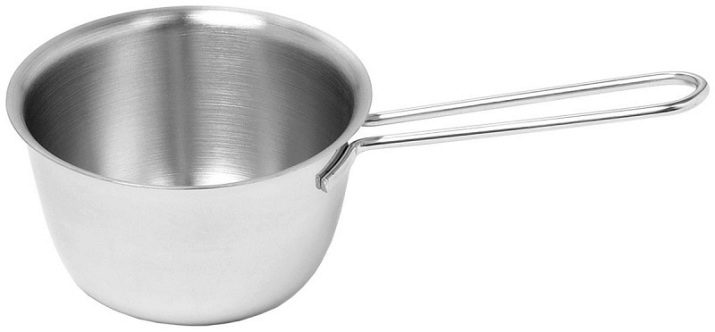
- Gosyatnitsa. This is an oval container with a lid, slightly resembling a pan. Modern options are made of cast iron, heat-resistant glass, ceramics. In such dishes, bake and stew meat, vegetables, poultry.
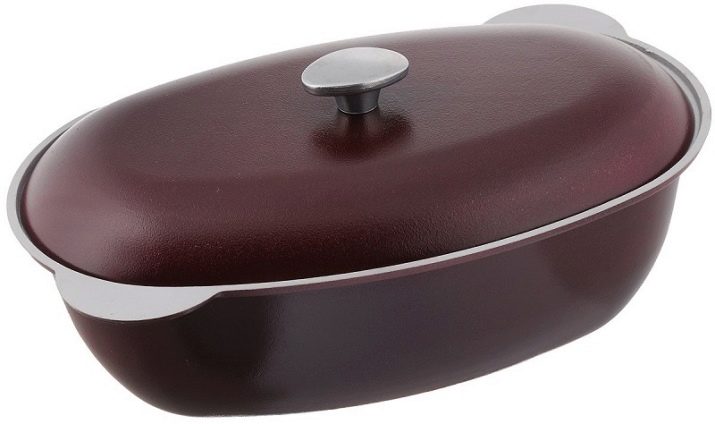
- Brazier. This is a container with a thickened bottom, a lid and small handles on the sides. Modern variations have a diverse shape: they are round, oval, rectangular. The dishes are used for baking meat, fish, vegetables. It turns out very tasty French fries in it. For the manufacture of such containers use steel, aluminum, cast iron and glass.

- Tazhin - shallow wide tank with a high cone-shaped lid. Dishes came to us from Asian countries. Due to the wall thickness, special shape and massiveness, it is ideally suited for long extinguishing and "languishing". During cooking, steam condenses at the top of the lid. Then the drops gradually flow down the walls. This allows you to get juicy dishes without adding oil and water. Ingredients are stewed in their own juice. In tazhin they cook meat, poultry, fish, vegetables.
Complex dishes with various herbs and spices are especially tasty.

- Pots for baking. These are small portioned containers made of ceramic. They cook delicious cereals, soups, julienne and other dishes.
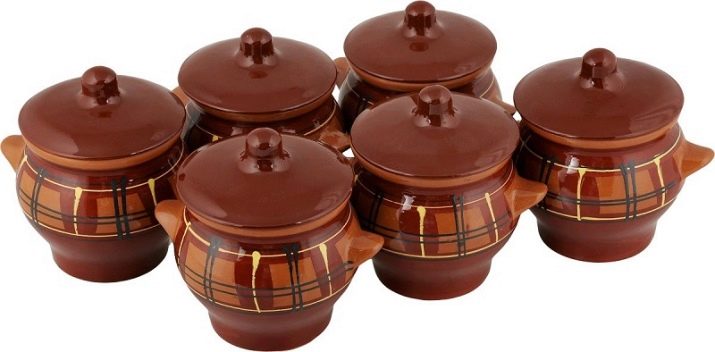
- Baking sheet - a thin sheet of metal with curved edges and sides. Pies, rolls are usually baked on baking sheets. They are also suitable for baking potatoes, meat, fish, vegetables.
Also on sale are a variety of silicone molds and trays, resembling a small baking sheet with higher walls.

Shape and size
The sizes of containers for cooking in the oven vary from very small, suitable for serving one portion of the dish, to large, designed for a family of two or more people.
The shapes of the dishes are also different. The choice here depends on the purpose of the tank.
- Round. In such dishes it is very convenient to bake cakes, various pies, pizza. It is worth considering that for baking bakery products, containers with a side height of about 7 cm are more suitable. For the preparation of other types of confectionery products, a height of about 3 cm is sufficient.
- Oval shape optimal for cooking meat and fish dishes.
- Rectangular In such containers you can also bake meat and fish. They are suitable for cooking lasagna, vegetable dishes, filled cakes.
- Wavy shapes used to create beautiful cupcakes, cakes, pastries. Before placing the dough in a container, all walls are carefully lubricated with oil. This is necessary so that the baking is easily removed from the dishes, and its edges are neat and beautiful.
- Curly. In addition to the usual wave-like forms, manufacturers offer more original options. These are containers in the form of stars, hearts, letters, animals, etc. Usually they are made of silicone. They are used for the manufacture of a variety of confectionery products that delight both adults and children with their appearance.
Bakeware can be either whole or split. Many housewives find the second option more convenient. It is ideal for baking biscuits. Baking is easy and quick to remove. This is facilitated by a removable bottom.
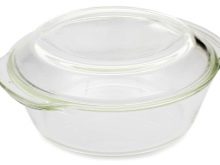
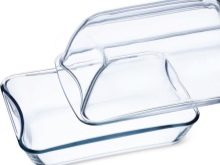
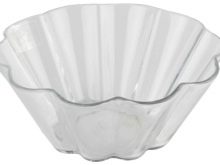
Materials
Ceramics
Earthenware dishes are very beautiful, and the serving of dishes in it is very effective. Modern microwave ovens and ovens allow the use of such products if they are heat resistant. It is advisable not to heat the device too much, the temperature should be increased gradually. Products will be slowly stewed, retaining all their beneficial properties. After cooking, the dish will remain warm for a long time.
The disadvantages of ceramic containers include the porosity of the material.Such dishes can absorb aromas, so it is better to transfer the remains of the dish into another container. It is worth noting the fragility of ceramics. Handle products with extreme care.

Silicone
Silicone products are characterized by plasticity, lightness, a variety of shapes and colors. That is why today they are very popular. Tanks have non-stick properties, they make excellent baking. The material is not afraid of temperature changes, such forms can be put in the oven and in the refrigerator. Unlike glass or ceramic dishes, such a product cannot be broken.
You should not just try to cut a cake or pie without taking it out of shape. In this case, the silicone can be accidentally damaged.
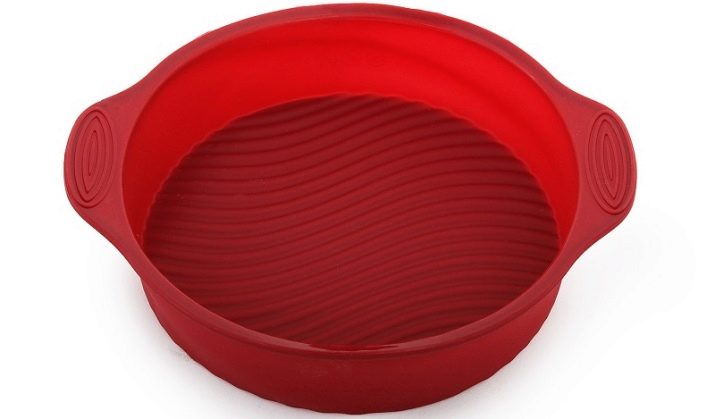
Teflon
Teflon coating allows cooking without fat. This is a great solution for a diet. However, it is important to remember that the material must not be heated above 260 ° C, otherwise it will begin to release substances hazardous to human health.
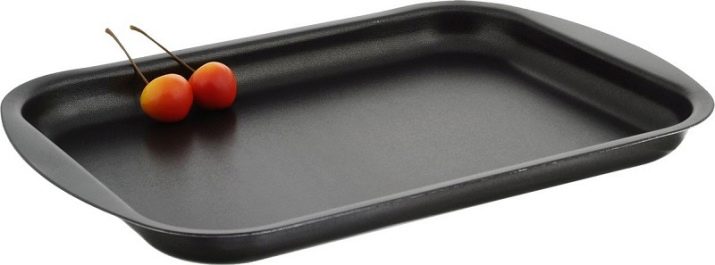
Steel
Steel dishes - a classic option. It is affordable, convenient to use, practical. Stainless steel is resistant to corrosion, is durable, retains all the beneficial properties of the products. The choice of steel dishes suitable for the oven is very wide. In such containers, food is cooked quickly, without burning at the same time.
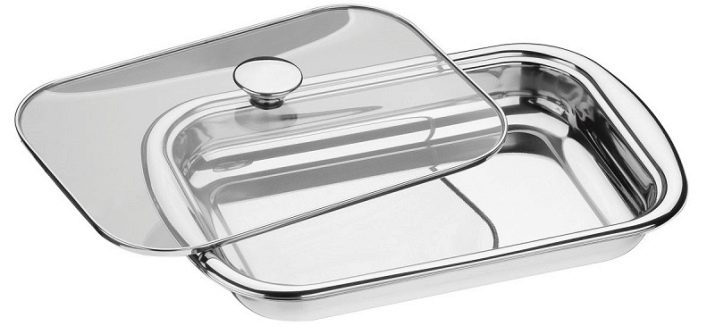
Cast iron
Cast iron is not very attractive. However, some still use cast-iron products for cooking. The material retains heat for a long time, does not allow food to burn. It is durable, resistant to mechanical stress. Scratches from metal spoons do not affect the functionality of such dishes. Nevertheless, cast iron has more drawbacks. It is prone to rust, absorbs fat, which gradually becomes carcinogenic.
In addition, cast iron products are heavy.
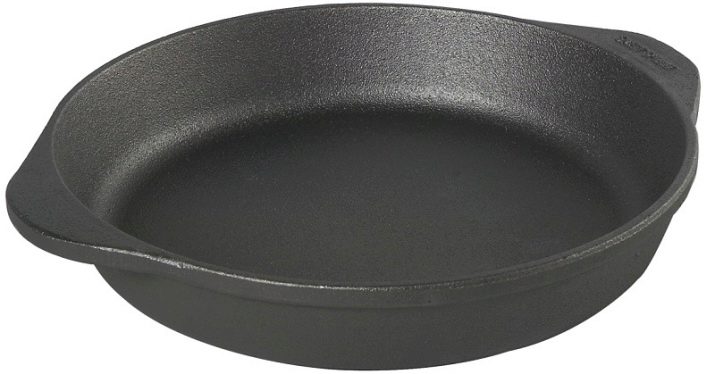
Glass
Heat-resistant glass is also used to make heat-resistant cookware. It can both bake and heat food. The shape is usually oval or rectangular. This ensures uniform heating. Some models are equipped with a cover. It is only important to remember that glass does not tolerate sudden temperature changes.
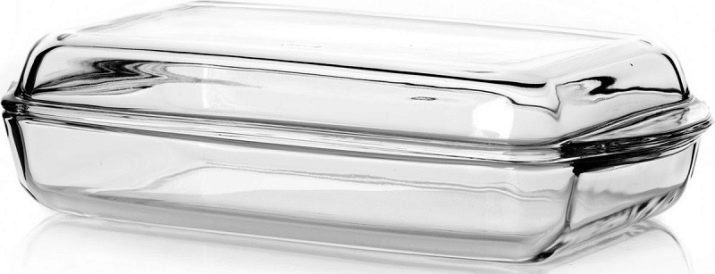
Paper or foil
Disposable foil or special paper forms - an excellent solution for those who rarely cook and do not want to clutter up the kitchen with various dishes. Paper allows you to bake without a lot of oil. It does not deform, retains the shape of confectionery, makes it easy to remove (in extreme cases, you can just tear the paper). Such forms do not need to be washed. Paper products can be refrigerated. It is also worth noting the pleasantly low price of such a solution.

How to choose?
When choosing cookware for gas or electric ovens, there are several important points to consider.
- The size of the container depends on the number of members of your family. If you two are small enough. If the family is large or guests often come to you, it is better to take a larger volume. Another option is a few individual small pots or, for example, cocotnas.
- The dimensions of the oven chamber should also be considered, especially when buying a baking sheet. From its edges to the walls of the oven should remain at least 5-6 cm.
- The next criterion is the purpose of the dishes. Healthy meals without fat in one's own juice can be prepared in ceramic and glass containers. If you like a crispy mouth-watering crust, choose aluminum or cast iron. Such materials can be used in grill mode. Silicone is usually used to create baked goods (cakes, muffins, etc.).
- As for the thickness of the dishes, it depends on the cooking method. Thick-walled products are designed for long languishing at low temperatures. Thin steel baking trays are suitable for high heating and subsequent rapid cooling.
- The height of the walls is related to the type of dish you are going to cook.High are needed for bakery products, potatoes, casseroles. Meat and fish can be baked on a baking sheet with low sides.
- If you like pilaf, get a cauldron. If you like julienne and casseroles, a cocotte maker will be a good buy. Sophisticated multicomponent dishes and delicious roast are obtained in the coop. Appetizing soups and cereals - in a pot with a lid. Tajine is useful for creating meals without fat.
- When choosing dishes, it is worth considering the type of appliance. For example, if you have a microwave oven, metal objects will not work for you. It's all about the ability of the material to reflect microwaves.
- Plastic dishes are not suitable for use in any type of oven. Also, enameled dishes that are not intended for strong heating should not be placed there. It is worth noting that some cast iron baking sheets also have an enamel finish. Therefore, it is important to take into account the manufacturer's recommendations on the purpose of the item.
- Do not place containers with damage (cracks, chips, etc.) in the oven. Under the influence of temperature, such dishes may burst. This in turn can lead not only to spoilage of the dish, but also to damage the inner surface of the oven.
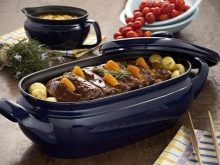
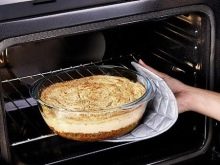

Care Features
Enameled, glass and steel products do not require special care. They are easy to clean by conventional means. The main thing is not to use abrasive substances and wipe the products dry to avoid stains. If stains appear on a stainless steel item, they can be eliminated with vinegar or citric acid. Cast iron cookware, like iron, is prone to rust, so it can not be soaked.
Also, do not forget about the sensitivity of some materials to temperature contrast. Do not pour cold water into a cold container.
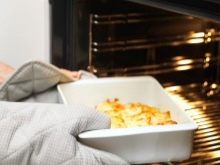
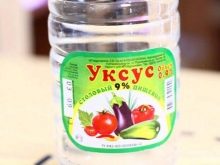
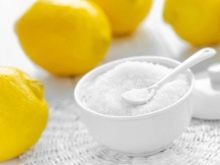
See how the baking dish differs in the next video.
